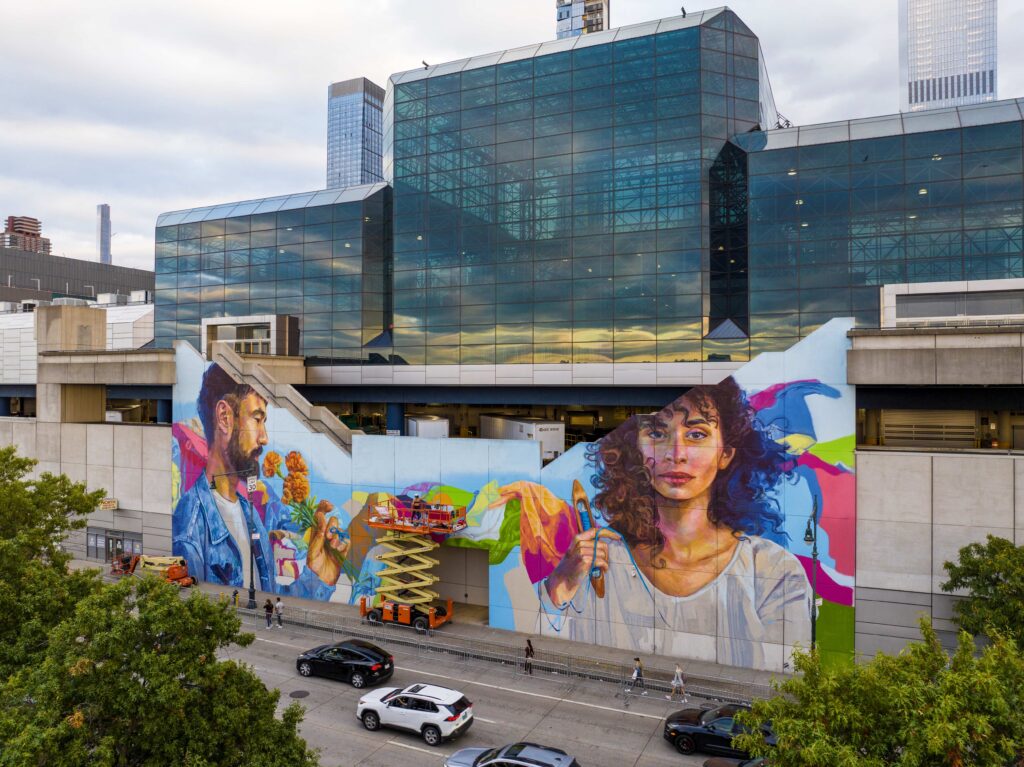Restoring land has five challenges, but let’s be creative in our approach

Photo credit: UN Decade on Ecosystem Restoration
As New York City buzzed with heads of state gathering for their annual UN General Assembly last week, the United Nations Decade on Ecosystem Restoration launched an art campaign to draw leaders’ attention to a critical global issue, and to it make relatable to ordinary people.
Four gigantic murals appeared in the Hudson Yard neighborhood to showcase urban and ocean ecosystem restoration.
In one massive 13-story format mural, a young child hugs a tree in the City’s concrete jungle.

Photo credit: UN Decade on Ecosystem Restoration
Another colorful mural depicts the rich and wonderful life and colors of oceans, which are often obscure to us. Saving our oceans is critical in saving land because warming oceans drive the atmospheric changes that are responsible for the extreme weather events linked to droughts and flashfloods.

Photo credit: UN Decade on Ecosystem Restoration
Take a moment to view these masterpieces online on the UN Decade of Ecosystem Restoration website.
Communicating land restoration through art is a critical yet underutilized channel for reaching hearts and minds, especially on urgent, obscure and under-reported global threats.
Land degradation, is one such threat.
It impacts at least one in three people in the world. And whereas the impacts of our overconsumption have come under great scrutiny on issues such as climate change and biodiversity loss, their impacts are not as sharply and critically examined in the context of land degradation.
Scientists in the past half century have not only warned us about the consequences of degrading the land, which include forced migration. But they have also shared thousands of solutions on how to avoid, reduce and reverse land degradation.
To date, the international community has agreed on many initiatives to restore an estimated 1 billion hectares of degraded land by 2030.
The United Nations declared 2021 to 2030 as the UN Decade on Ecosystem Restoration to rally global support to achieve these commitments in the face of increasing, recurrent and intense disasters.
These include flashfloods and droughts, and their spiraling effects, which are destroying livelihoods and driving families, households and communities not just to poverty, but to flee their homes and lands.
G20 countries, in setting up the UNCCD G20 Global Land Initiative (GLI) in 2020, signaled growing recognition that every citizen – including those in the world’s leading economies – must act both by supporting the achievement of these restoration commitments, and doing much more: reducing degraded land by 50 percent by 2040.
These objective are achievable by acting on the five key challenges, and help take land restoration to scale:
- Regulation
- Financing
- Business activity
- Human resources
- Land tenure.
I have described these in detail in the following interview:
This is what makes the murals in New York City particularly welcome news. The murals invite everyday citizens to be engaged. By reaching not just minds through facts but hearts through art, we persuade people to take personal interest, and spark action.




